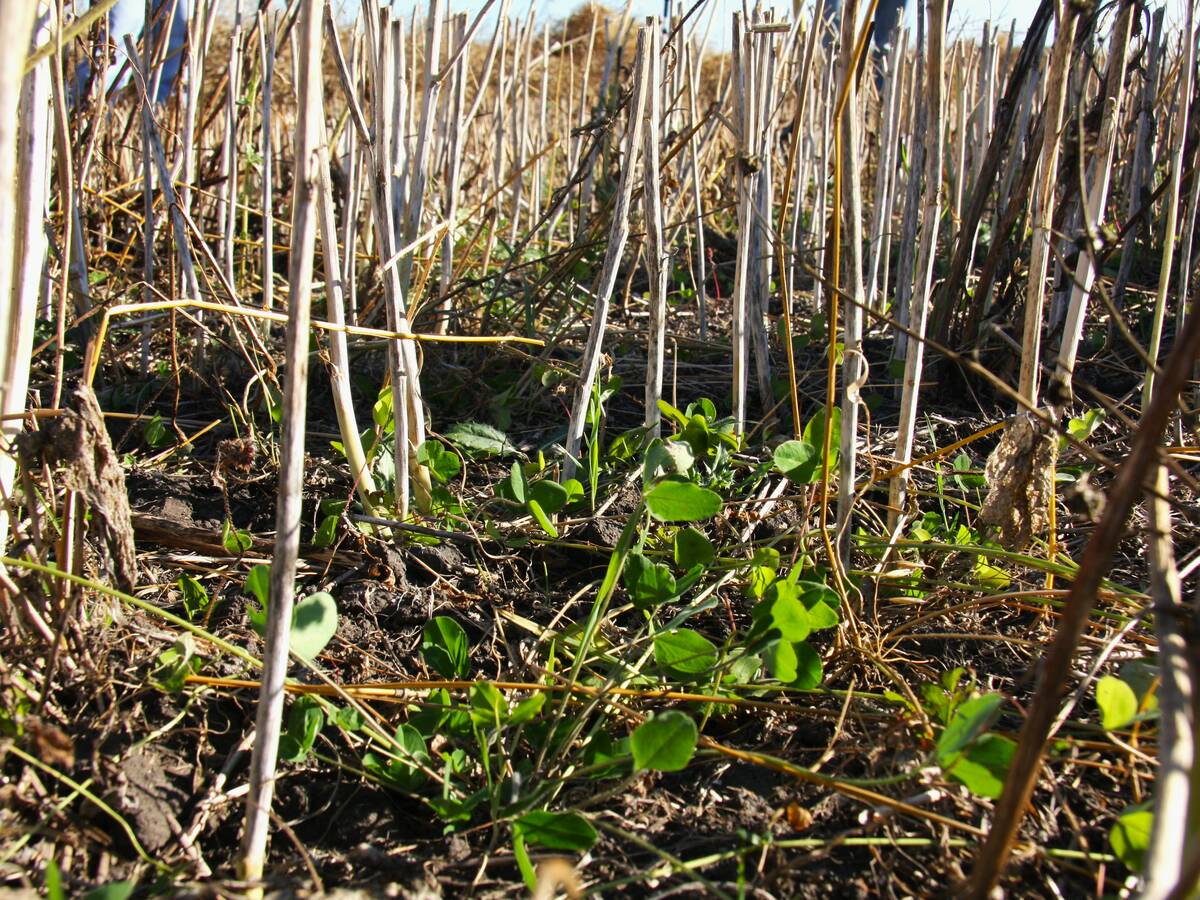TILLEY, Alta. — Seed grower Patrick Fabian once thought tillage radishes were the ideal crop, capable of soil remediation, compaction reduction and high-protein feed value.
He’s still a promoter but he has discovered the radishes won’t solve all problems.
On Aug. 10, Fabian Seed Farms held a field day east of Brooks, Alta., where he told growers more about the mighty radish.
“I’m not one to over-promote these,” said Fabian.
“These things work well but they work well in certain situations and if you can meet those situations, they’ll do a fantastic job for you.
Read Also

Saskatchewan project sees intercrop, cover crop benefit
An Indigenous-led Living Lab has been researching regenerative techniques is encouraging producers to consider incorporating intercrops and cover crops with their rotations.
“When we first started selling these things, they were the sun, moon and stars…. They would just about do everything except wash your dishes. Well, we’re finding out that that isn’t the case.”
Tillage radishes are a good fit for farmers who make silage and want to plant a fall crop for future grazing, said Fabian.
The crop’s previously touted abilities to remediate soil and reduce compaction remain intact but timing of seeding is crucial to those factors.
Fabian cautioned against seeding the radishes too early. If the plants detect long days, they’ll try to set seed rather than focus on taproot development, and it’s the taproots that address soil issues.
“You’ll get this spindly little eight-inch root and that’s it. You get a canola plant that has white flowers, basically. That’s what it looks like,” said Fabian.
Tillage radish roots have a cracking pressure of 240 to 260 psi and will grow deeper than most crops. That allows them to pull up nutrients, which are released in the soil once the plants freeze and the tubers decompose.
“You want to have competition so you don’t get these great big tubers. Otherwise you’ll have a bunch of holes in your field next spring.”
Seeded by themselves, he recommends six pounds per acre but when seeded with other crops, three lb. per acre will do the job. He estimated costs at $15 per acre for solid seeding and $7.50 when planted with other crops.
The radishes have 16 to 19 percent protein and both foliage and tubers are attractive to grazing cattle.
“They’re pretty hot by themselves so that’s why guys will seed them with oats, they’ll seed them with fall rye, they’ll seed them with trit (triticale), just something to bulk it up a little bit so they can stretch the value of the extra protein out of them,” said Fabian.
Tillage radishes are also frost hardy. Fabian said it takes three nights of at least -9 C to stop them.
Scott Lehr, who farms near Medicine Hat, Alta., has had tillage radishes in his cropping plan for years.
“I started growing them for compaction issues. Between silaging and spraying, manure and cattle, I didn’t want to pull iron if I could help it, so I started growing them.”
The radishes have done the desired job, said Lehr. He seeded them again this year with winter wheat and winter triticale, with plans to let his cows winter on the crops.
“They work good. There’s super high protein feed value in them, and cattle eat them. They eat them right off to the ground, and they silage nice. I haven’t had any drawbacks with them,” Lehr said.
He has learned the value of seeding radishes between mid July and mid August, and has found they won’t thrive in dry conditions.
Lehr has also tried radishes seeded with sorghum and sudan grass, planted after the first silage crop has been taken off.
He has realized eight tons per acre from that combination, which he considered successful for a second crop.
“Sorghum loves the heat, so it grows like crazy. “We put some in again around the 20th of July. We’ve got sorghum, tillage radishes, sweet clover and a little bit of fall triticale.
“If we get a good late fall, maybe (we’ll get) a little regrowth for some grazing this fall or else in the spring our cows move through that field on the way to the calving field, so maybe that triticale will start growing and we’ll get a little bit of grazing this spring.”
Fabian Seed Farms has a test plot of sorghum and sudan grass. Although extremely frost sensitive, the crop grows quickly in the right conditions.
“It’s another tool for your toolbox,” said Fabian.















